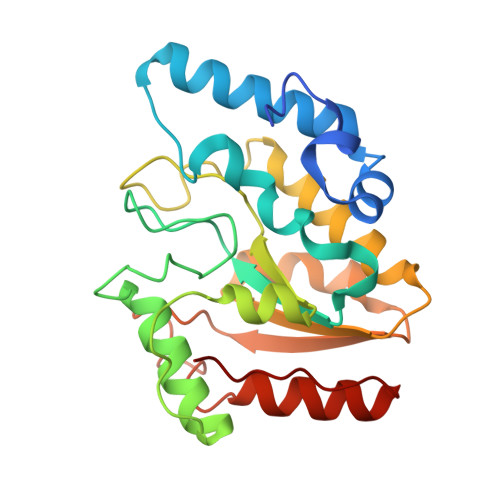Crystal structures of non-uracil ring fragments in complex with Mycobacterium tuberculosis uracil DNA glycosylase (MtUng) as a starting point for novel inhibitor design: A case study with the barbituric acid fragment.
Kesharwani, S., Raj, P., Paul, A., Roy, K., Bhanot, A., Mehta, A., Gopal, A., Varshney, U., Gopal, B., Sundriyal, S.(2023) Eur J Med Chem 258: 115604-115604
- PubMed: 37399710
- DOI: https://doi.org/10.1016/j.ejmech.2023.115604
- Primary Citation of Related Structures:
8I61, 8I62, 8I63, 8I64, 8I65, 8I66, 8I67, 8I68, 8I69, 8I6A, 8I6B, 8I6C, 8I6D - PubMed Abstract:
Uracil DNA glycosylase (UDG or Ung) is a key enzyme involved in uracil excision from the DNA as a repair mechanism. Designing Ung inhibitors is thus a promising strategy to treat different cancers and infectious diseases. The uracil ring and its derivatives have been shown to inhibit Mycobacterium tuberculosis Ung (MtUng), resulting from specific and strong binding with the uracil-binding pocket (UBP). To design novel MtUng inhibitors, we screened several non-uracil ring fragments hypothesised to occupy MtUng UBP due to their high similarity to the uracil structural motif. These efforts have resulted in the discovery of novel MtUng ring inhibitors. Here we report the co-crystallised poses of these fragments, confirming their binding within the UBP, thus providing a robust structural framework for the design of novel lead compounds. We selected the barbituric acid (BA) ring as a case study for further derivatisation and SAR analysis. The modelling studies predicted the BA ring of the designed analogues to interact with the MtUng UBP much like the uracil ring. The synthesised compounds were screened in vitro using radioactivity and a fluorescence-based assay. These studies led to a novel BA-based MtUng inhibitor 18a (IC 50 ?=?300?¦̀M) displaying ¡«24-fold potency over the uracil ring.
Organizational Affiliation:
Department of Pharmacy, Birla Institute of Technology and Science Pilani, Pilani Campus, Rajasthan, 333031, India.





















